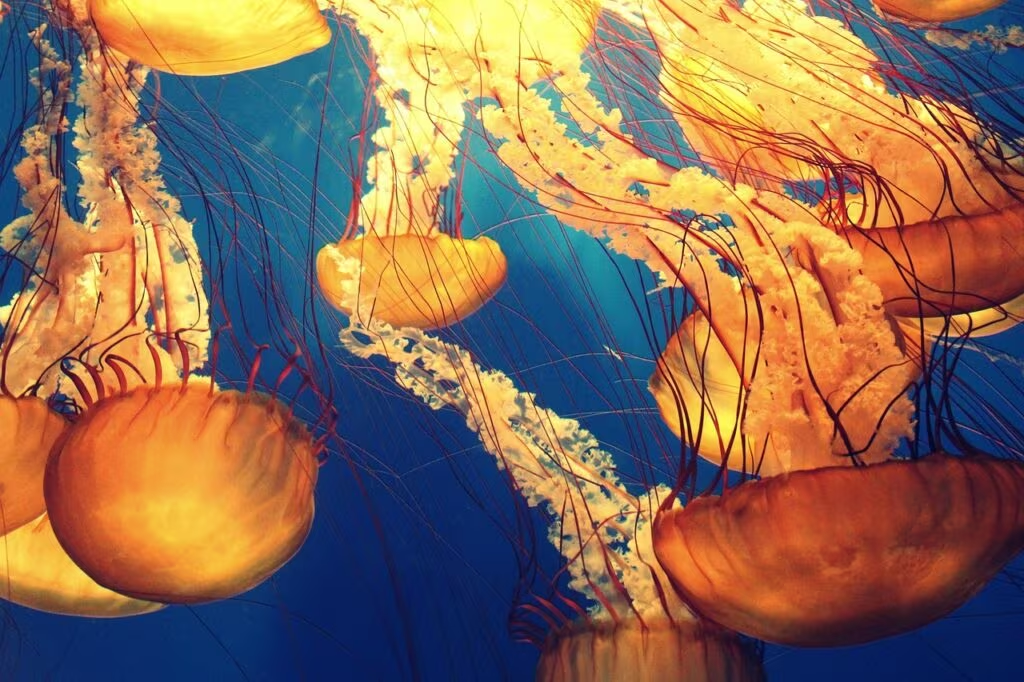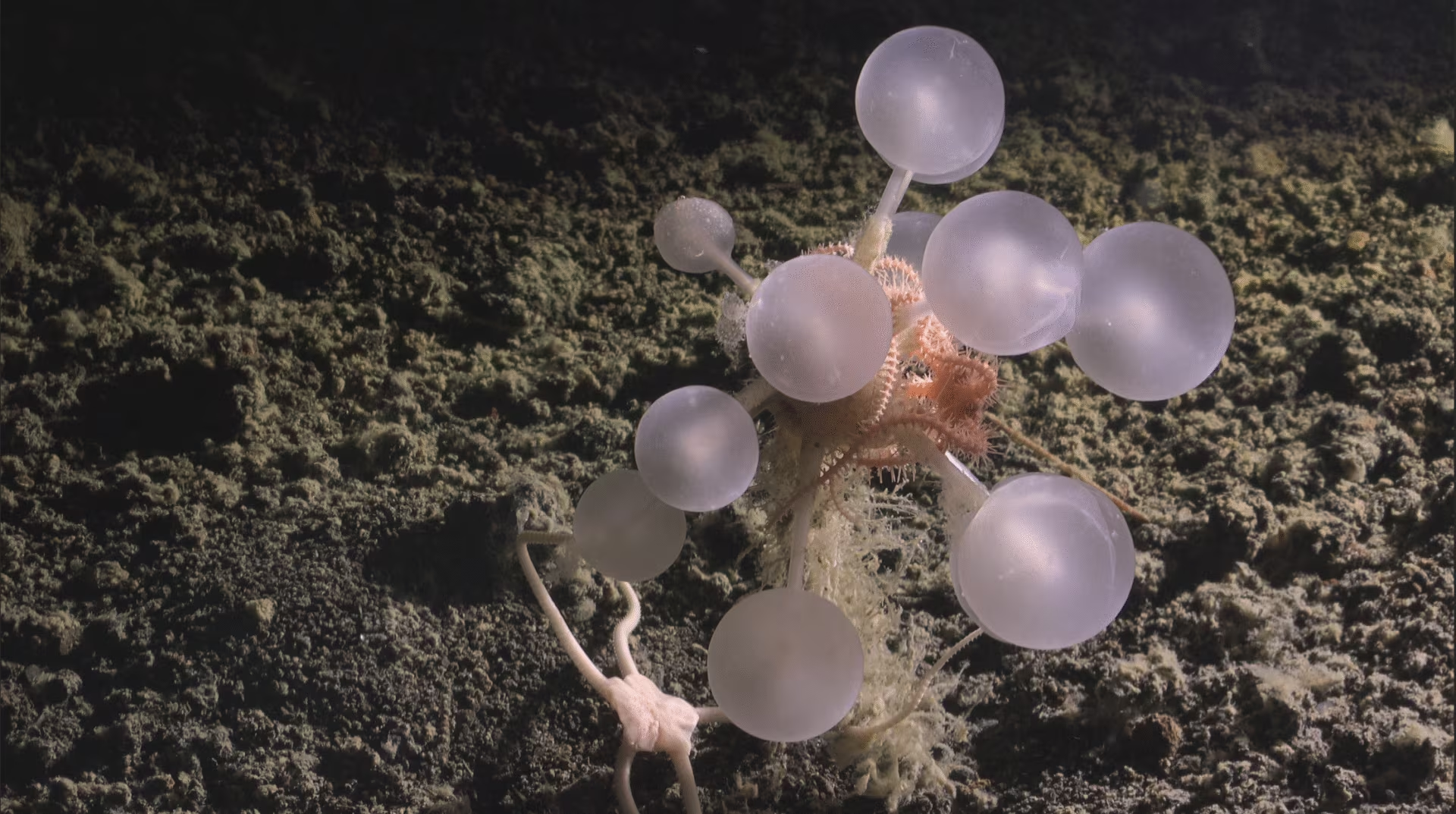Unprecedented Deep-Sea Biodiversity Revealed Near Antarctica
Marine scientists have announced the discovery of potentially hundreds of new deep-sea species, including a bizarre carnivorous sponge nicknamed the “death-ball,” found in the remote waters of the Bellingshausen Sea off the Antarctic Peninsula. This extraordinary biodiversity was revealed in an area previously inaccessible, only recently exposed by the dramatic calving of a massive iceberg.
The findings stem from a recent expedition conducted by the Ocean Census Science Network aboard the research vessel R/V Falkor (too). The mission focused on exploring the deep-sea benthos—the organisms living on the seafloor—in the wake of significant glacial retreat, offering a rare glimpse into ecosystems that may soon face rapid environmental change.

The Anatomy of a Predator: The ‘Death-Ball’ Sponge
The most striking discovery is a new species of carnivorous sponge, informally dubbed the “death-ball” sponge due to its unique, spherical morphology and predatory nature. Unlike the vast majority of sponges, which are passive filter feeders, this newly identified creature actively captures and consumes small prey.
Carnivorous sponges belong primarily to the family Cladorhizidae and represent a fascinating evolutionary adaptation to the nutrient-poor conditions of the deep sea. Instead of relying on currents to bring suspended particles, these sponges have evolved specialized structures to trap small crustaceans and other tiny invertebrates.
Key Characteristics of the New Sponge:
- Predatory Mechanism: The sponge is covered in microscopic, hook-like spicules (skeletal elements) that act like Velcro, ensnaring unsuspecting prey that brush against its surface.
- Morphology: Its structure is highly adapted for maximizing surface area for trapping, giving it the characteristic “death-ball” appearance.
- Ecological Niche: By becoming a predator, the sponge bypasses the need for high levels of plankton in the water column, thriving in the abyssal environment where food is scarce.
This discovery underscores the vast, unexplored biological complexity hidden beneath the ocean surface, particularly in the deep polar regions.
Unveiling the Bellingshausen Sea Benthos
The expedition’s primary goal was to conduct a rapid biodiversity assessment of the deep-sea floor in the Bellingshausen Sea. This region became a priority following the calving of Iceberg A-84, a colossal chunk of ice measuring approximately 510 square kilometers, which broke away from the George VI Ice Shelf.
For millennia, the seafloor beneath this ice shelf was shielded from the outside environment. The removal of the ice cover, a direct consequence of warming ocean temperatures, has exposed a pristine, yet highly vulnerable, habitat.

The Scope of the Deep-Sea Haul:
While the carnivorous sponge captured headlines, the total haul of potential new species is substantial, encompassing a wide range of phyla:
- Sponges: Numerous other sponge species, varying in shape and size, were collected, many of which are likely new to science.
- Corals: Several types of cold-water corals, crucial habitat builders in the deep ocean, were documented.
- Annelids and Worms: A variety of polychaete worms and other benthic invertebrates adapted to the extreme pressure and cold.
- Crustaceans: Diverse amphipods and other small crustaceans that form the base of the deep-sea food web.
Scientists estimate that the expedition collected specimens representing potentially hundreds of species that have never been formally described. The process of morphological and genetic analysis to confirm these as new species is ongoing, requiring meticulous work back in laboratories.
Climate Change and the Race Against Time
These discoveries are not just a testament to the ocean’s vastness; they carry significant implications regarding climate change and conservation. The exposure of the Bellingshausen Sea benthos is a direct result of accelerated glacial melt in the Antarctic Peninsula, one of the fastest-warming regions on Earth.
This urgency drives the work of organizations like the Ocean Census, which aims to discover and document 100,000 new marine species within the next decade. The ability to study these newly exposed habitats provides a unique baseline, but also raises concerns about their longevity.
“We are in a race against time to understand these ecosystems before they are fundamentally altered by global climate change,” noted a lead scientist on the expedition. “The sudden removal of the ice cover changes the light levels, sedimentation rates, and water chemistry, potentially threatening these unique, slow-growing communities.”
Understanding the biodiversity of these deep-sea areas is critical for effective conservation planning. If species are not documented, they cannot be protected, especially as human activities—including potential deep-sea mining or fishing—expand into previously untouched polar waters.
Key Takeaways: The Antarctic Deep-Sea Discoveries
These findings provide crucial insights into deep-sea biology and the impact of climate change on polar ecosystems:
- Location: Discoveries made in the Bellingshausen Sea near the Antarctic Peninsula.
- Catalyst: The exposure of the seafloor was caused by the calving of the 510 km² Iceberg A-84 from the George VI Ice Shelf.
- Headline Species: A new carnivorous sponge, nicknamed the “death-ball,” was found, adapted to prey on small invertebrates in nutrient-scarce environments.
- Scale: The expedition collected potentially hundreds of new species, including various sponges, corals, and worms.
- Significance: The research highlights the immense, undocumented biodiversity of the deep ocean and underscores the critical need for rapid scientific exploration in vulnerable polar regions before they are irrevocably changed by climate warming.
Conclusion
The discovery of the carnivorous “death-ball” sponge and its numerous deep-sea neighbors serves as a powerful reminder of how little we know about our planet’s oceans. These findings reinforce the Bellingshausen Sea as a critical biodiversity hotspot, now under threat from rapid environmental shifts. As the ice continues to recede, the scientific community is mobilized to document these unique life forms, ensuring that these fragile ecosystems are understood and, hopefully, protected for future generations.
Original author: Rob Hutchins
Originally published: October 29, 2025
Editorial note: Our team reviewed and enhanced this coverage with AI-assisted tools and human editing to add helpful context while preserving verified facts and quotations from the original source.
We encourage you to consult the publisher above for the complete report and to reach out if you spot inaccuracies or compliance concerns.

